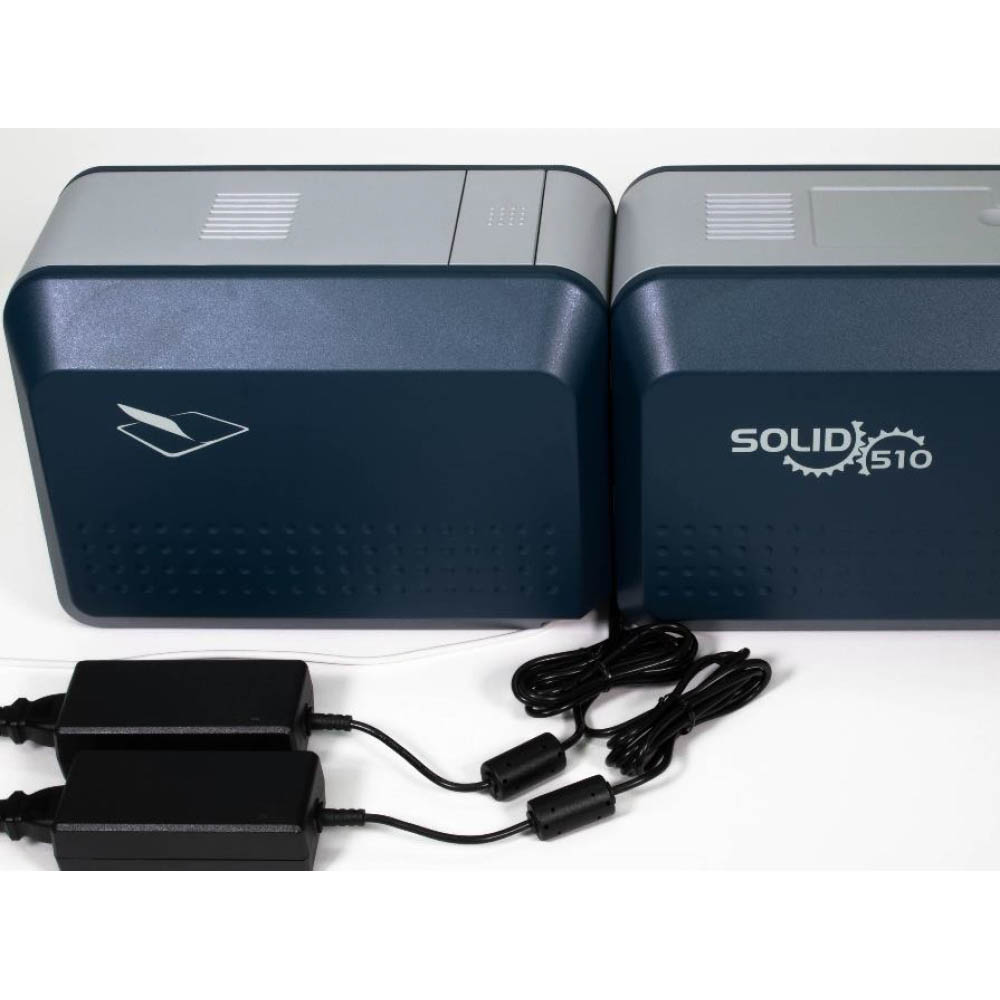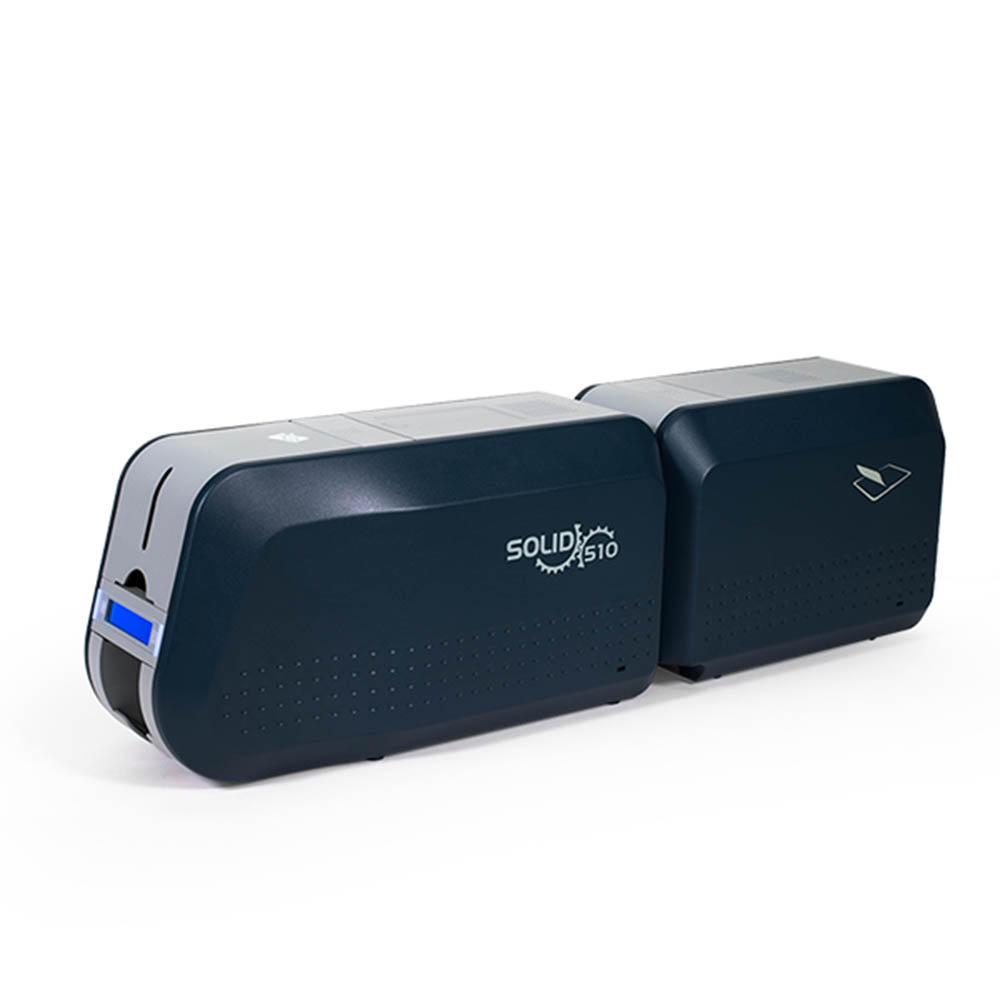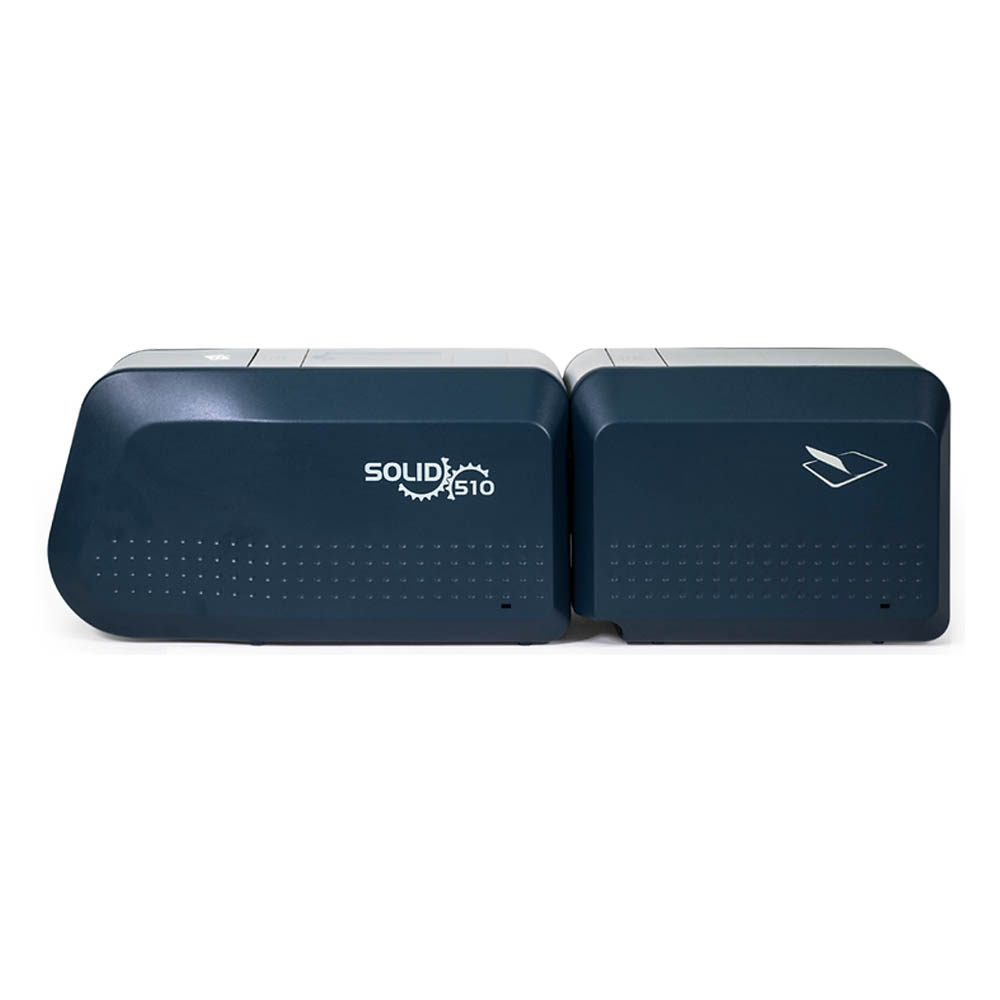SOLID-510 Laminator is a good option for printing and laminating at the same time which enables to produce extra security long-life ID cards with customizable security patch films.
With DLW (Direct Laminating in a Wink) technology, SOLID-510 Laminator ensures most stable & fast laminating with premium quality protection for PVC ID cards.
● Single or Dual Sided Printing and Laminating
● Instant Direct Heating Lamination *patent
● Printing & Laminating Speed: Max. 22 sec./card (YMCK & Single Lamination)
● 300, 600 & 1200dpi with Edge-to-Edge Printing
● 51S & 51D Field Upgradable to 51L
● 2 Lines LCD with 2 LED Buttons for Front Operation
● Holographic Lamination for Visual Security & Card Durability
● Installable Encoders: MS, Contact & Contactless
● Upgradable Modules: Ethernet, WiFi
Support Material : PVC CARDS, MIFARE CARD, EM CARD, ID CARDS, PVC ID CARDS

Information:
A PVC (Polyvinyl Chloride) plastic ID card printer is a specialized device used for printing high-quality, durable ID cards and badges. These printers are commonly used in various industries, including education, corporate, government, and healthcare sectors, to produce cards like employee IDs, student IDs, access control cards, and membership cards. Here’s a detailed guide to understanding PVC plastic ID card printers:
1. Types of PVC ID Card Printers
- Direct-to-Card (DTC) Printers:
- How They Work: Print directly onto the surface of the card using a ribbon and heat process.
- Pros: Generally more affordable and simpler, suitable for most standard ID card needs.
- Cons: Less durable prints compared to retransfer printing, with potential for edge-to-edge printing issues.
- Retransfer Printers:
- How They Work: Print onto a film that is then transferred onto the card, allowing for edge-to-edge printing.
- Pros: Produces higher-quality, more durable prints with better color accuracy and no edge artifacts.
- Cons: Typically more expensive and slower compared to DTC printers.
2. Key Features to Consider
- Print Resolution: Higher resolution (e.g., 300 dpi or 600 dpi) provides better image clarity and detail.
- Card Capacity: The printer’s input and output card capacity determines how many cards can be loaded and processed at a time.
- Print Speed: How quickly the printer can produce cards, which is important for high-volume printing.
- Encoding Options: Many printers offer options for magnetic stripe encoding, smart card encoding (e.g., RFID, contact/contactless chips), and barcodes.
- Color Options: Choose between single-sided or dual-sided printing based on your needs.
- Security Features: Some printers offer advanced security features like holograms or UV printing for added protection against counterfeiting.
3. Card Materials and Specifications
- PVC Cards: Standard material used for ID cards, durable, and suitable for most applications.
- Composite Cards: Combine PVC with other materials (e.g., PET) for enhanced durability and temperature resistance.
- Laminated Cards: Optionally laminated for added protection against wear and tear.
4. Maintenance and Care
- Regular Cleaning: Follow the manufacturer’s guidelines for cleaning the print heads and other parts to ensure optimal performance and print quality.
- Ribbons and Supplies: Regularly check and replace ribbons, cleaning cards, and other consumables as needed.
- Software Updates: Keep the printer’s software and drivers up to date to ensure compatibility and access to new features.
6. Applications and Use Cases
- Corporate: Employee IDs, access cards, visitor badges.
- Education: Student IDs, faculty IDs, library cards.
- Healthcare: Patient IDs, staff badges, access control cards.
- Government: ID cards, driver’s licenses, security badges.




 Paclin
Paclin